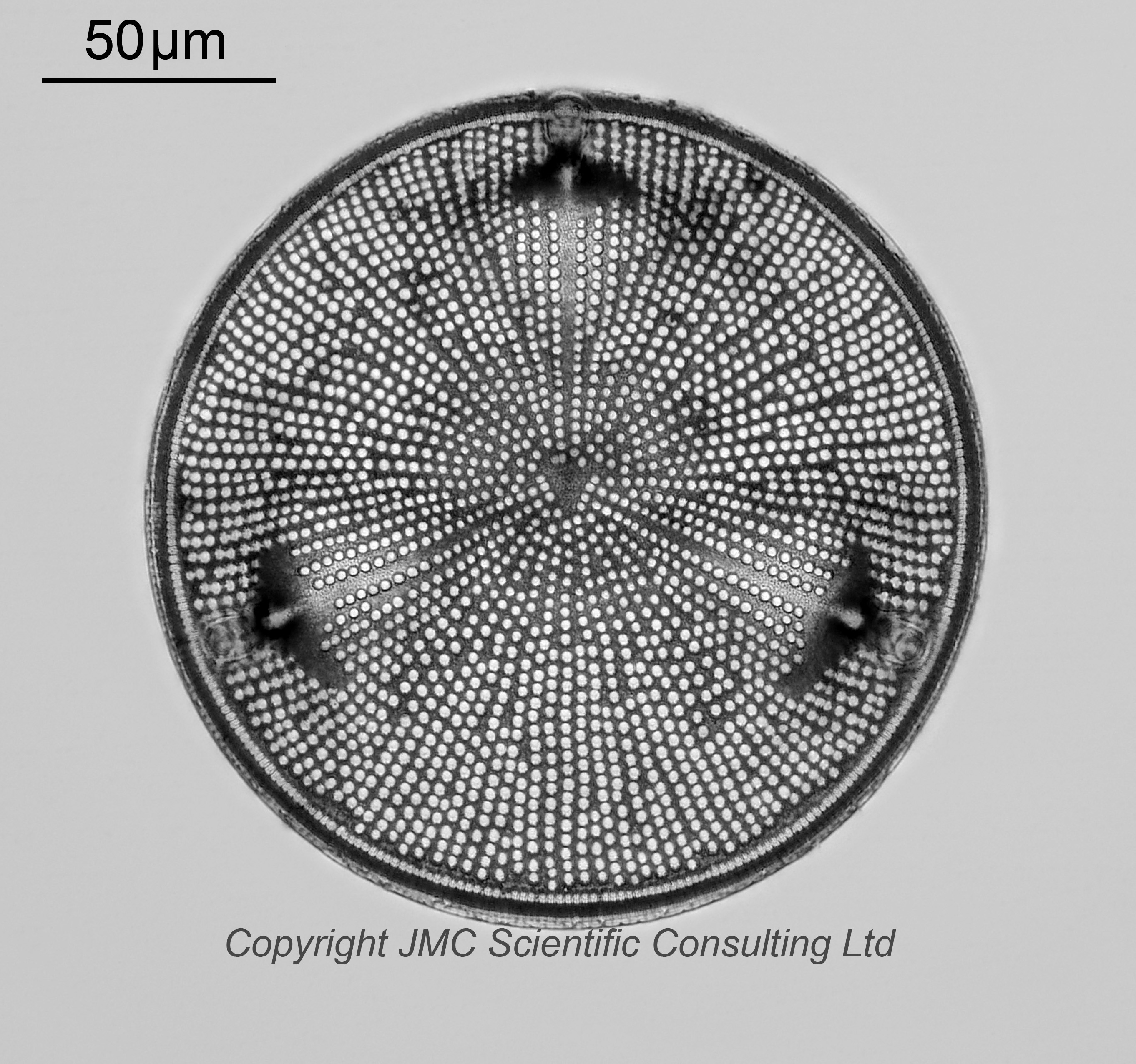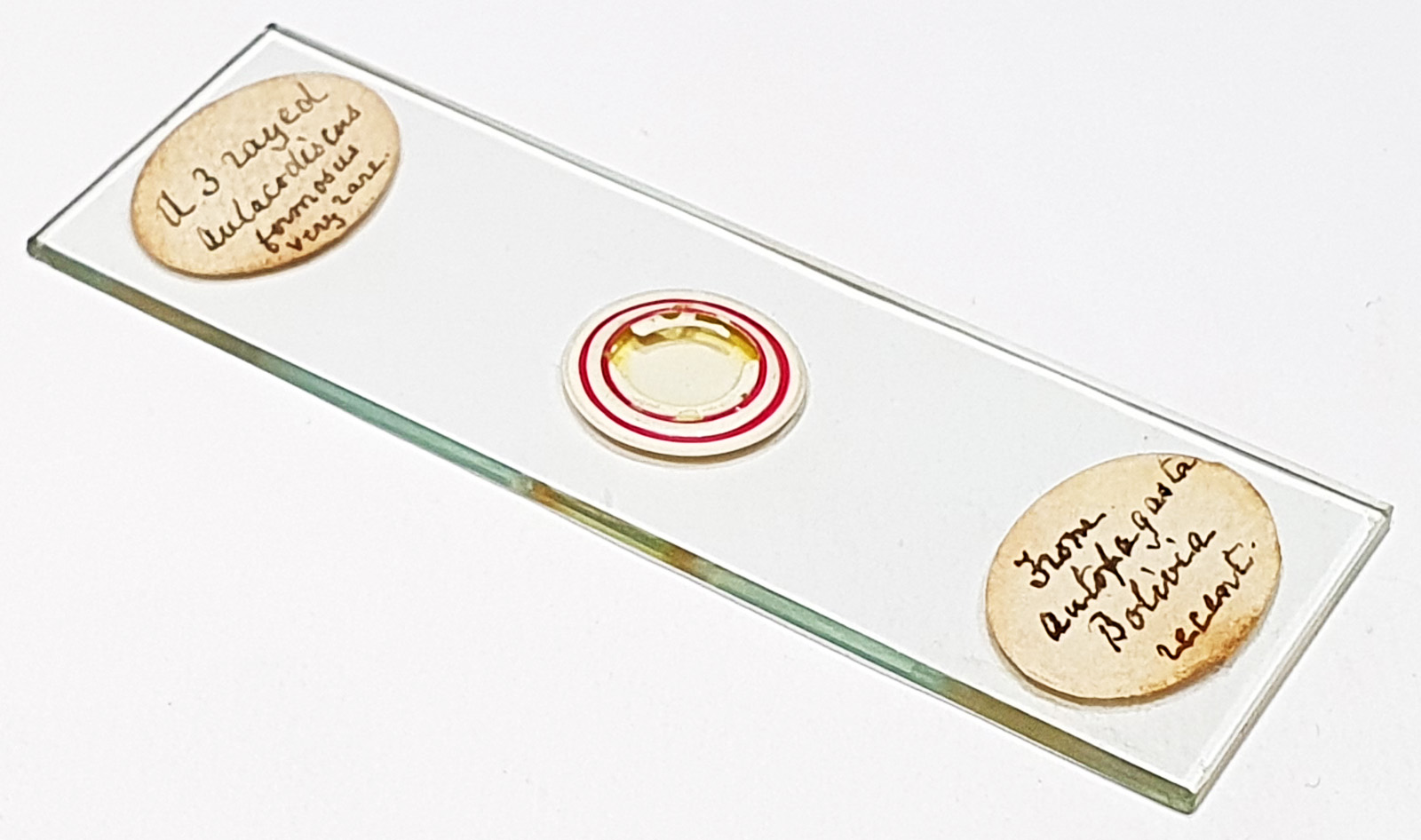

Aulacodiscus formosus from Antofagasta, Bolivia (now Chile). Recent. Single example on the slide. This has 3 rays rather than the usual 4, and is described as ‘very rare’. More on this in a minute. No makers name. Some damage to the coverslip ring. the diatom is either mounted deeply or the coverslip is thick, as I couldn’t image it with the 40x or 63x oil immersion objectives. It is very high contrast, which I wasn’t expecting.
Olympus BHB microscope using 450nm LED light. 20x Nikon Plan Apo NA 0.65 objective. Olympus Aplanat Achromat condenser, brightfield lighting. 2.5x Nikon CF PL photoeyepiece. Monochrome converted Nikon d850 camera. 42 images stacked in Zerene (Pmax).
Back to the ‘3 rays’. In Kitton, F. (1873), Remarks on Aulacodiscus formosus, Omphalopelta versicolor, &c., with Description of a New Species of Navicula. The Monthly Microscopical Journal, 10: 6-9. https://doi.org/10.1111/j.1365-2818.1873.tb04633.x., Aulacodiscus formosus is described as; “This form, unlike most other species of the genus, seems to be subject to little variation (excepting size my largest specimen is the 1/50, and my smallest 1/130 of an inch each in diameter); in no case have I detected a valve with more or less than four processes; even in an abnormal valve, in which the processes occupy only half the disk, there are still four of them.”. This is presumably why this one with 3 rays is described as ‘very rare’.